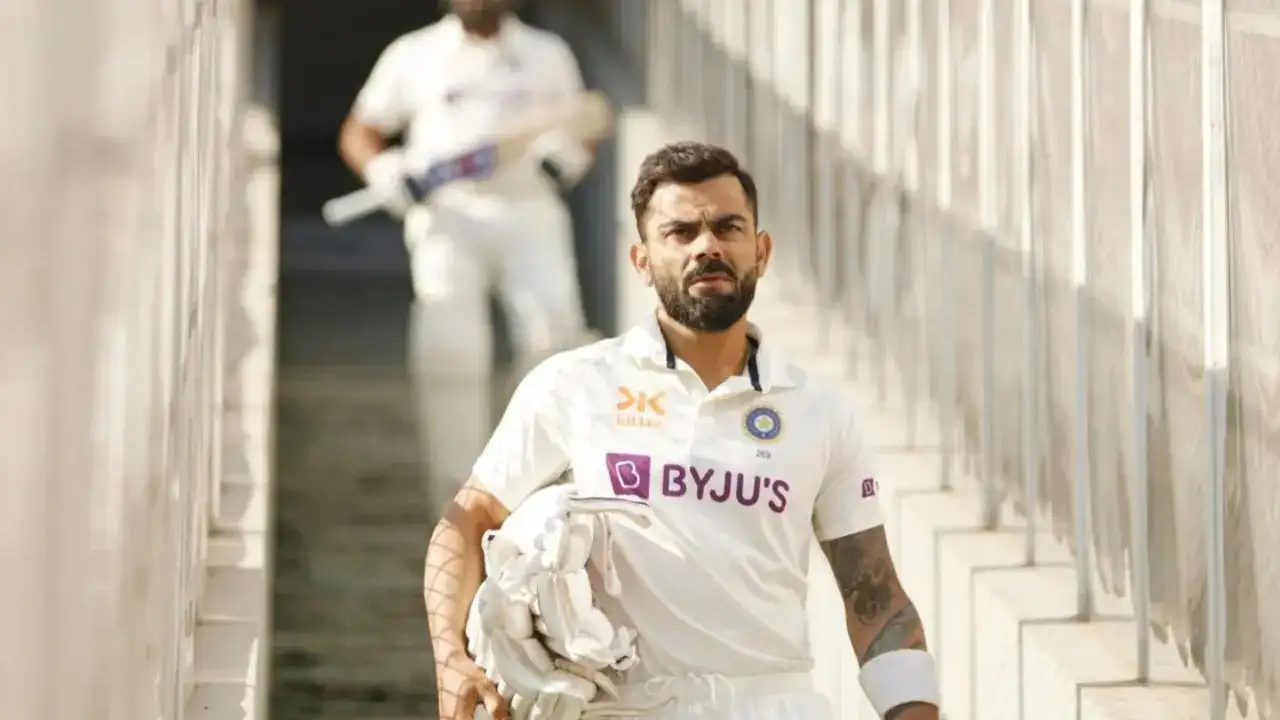
Virat Kohli announced his retirement from Test Cricket on May 13.
Photo : BCCI
Whenever India steps onto the field in whites, the image of a roaring Virat Kohli at the slip cordon—animated, fired up, and ready from ball one—comes instinctively to mind. His energy was relentless. His intent, unmistakable. His passion, untamed. And though much has already been said and written about Kohli’s legendary career, his legacy in Test cricket remains a glowing chapter of modern Indian sport.
Virat Kohli took over as India’s Test captain during a critical juncture. In 2014, M.S. Dhoni shocked the cricketing world by retiring from Tests mid-series in Australia, after the Melbourne Test in the Border-Gavaskar Trophy. In came Virat Kohli—not as a placeholder, but as a man with a mission. Alongside coach Ravi Shastri, he began rewriting the culture of Indian Test cricket. The Kohli-Shastri duo ushered in a new era for Team India marked by aggression, discipline, and consistent overseas success.
India, at that point, had nearly hit rock bottom in red-ball cricket. But Kohli, with his fearless approach and uncompromising attitude, re-energised the format for an entire generation. For a format often seen as the pinnacle of patience and technique, Kohli brought in something else—muscle, fire, and unrelenting desire to win. And more importantly, he made India’s youth fall in love with Test cricket again.
In his 14-year-long Test career, Kohli played 123 matches, scoring 9,230 runs at an average of 46.85. That he did not reach the 10,000-run mark or maintain a 50+ average seems irrelevant when weighed against his actual impact. “I don’t mind compromising on averages as long as we are winning Test matches. We are not playing for records or numbers,” Kohli had said back in 2015. He stayed true to his word.
His statistical record is undeniably impressive. He is India’s most successful Test captain with 40 wins in 68 matches, culminating in a remarkable win percentage of 58.82%. However, these stats merely scratch the surface. Kohli’s real contribution lies in how he turned India into a world-beating red-ball side, playing aggressive, result-oriented cricket on all surfaces, against all opponents.
He brought to the longest format an energy that was previously unseen. Kohli stripped Test cricket of its ornamental restraint and dressed it in purpose, power, and attitude. He made it fashionable to fight hard for five days, to take pride in a well-earned win in whites.
He demanded—and led by—intensity. Who can forget the 2021 Lord's Test when he told his teammates before going onto the field: "For 60 overs, they (Opposition) should feel hell out there." Draws were simply not part of his game plan; he played to win or perish trying.
It was not just about verbal aggression either. He backed his bowlers to the hilt, pushed for fast-bowling fitness, and built perhaps the most potent Indian pace battery in history. Whether in Johannesburg or Lord’s, the Indian team under Kohli walked out with belief and bite.
There was also honesty, raw and unfiltered. In 2014, when Mitchell Johnson hit him during the Australian tour, Kohli famously said in a press conference: “I respect quite a few of them (Australians), but someone who doesn’t respect me—I have no reason to respect him. As long as I am scoring runs, I’m happy. If you like it, good. If not, I’m not bothered.”
"I like playing against Australia because it is very hard for them to stay calm, and I don't mind an argument on the field, and it really excites me and brings the best out of me. So, they don't seem to be learning the lesson," he added.
This fire never dimmed. And now, after 14 intense years, Kohli has stepped away from Test cricket. He leaves behind a vacuum that cannot be filled easily—not just in runs or results, but in attitude. In grit. In defiance.
(Disclaimer: These are the personal opinions of the Author)
